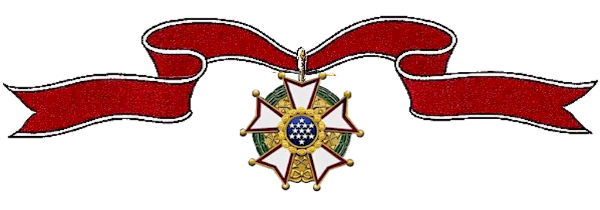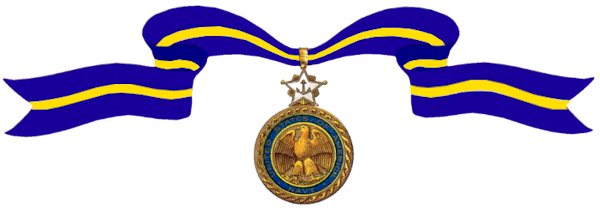John Brown graduated from the U.S. Naval Academy at Annapolis, Class of 1914. He retired as a U.S. Navy Vice Admiral.

Home:
,
Awards Received
-

Legion of Merit
-

Legion of Merit
-

Navy Distinguished Service Medal
-
Legion of Merit
Service:
United States NavyRank:
Rear Admiral [then Captain]Action Date:
July 6, 1942 – November 18, 1943
The President of the United States of America takes pleasure in presenting the Legion of Merit with Combat “V” to Rear Admiral [then Captain] John Herbert Brown, Jr. (NSN: 0-8613), United States Navy, for exceptionally meritorious conduct in the performance of outstanding services to the Government of the United States as Commanding Officer of Submarine Squadron FOUR during operations against enemy Japanese forces, from 6 July 1942 to 18 November 1943. By his outstanding knowledge of submarine warfare, Rear Admiral Brown made valuable contributions toward the training and indoctrination of submarines of the Submarine Force, Pacific Fleet, making them more efficient fighting units, and contributing to the success of Squadron FOUR in sinking seventy-two ships totaling 394,752 tons and in damaging 54 ships totaling 374,449 tons during this period. To further his exact acquaintance with submarine combat problems he participated in the FIFTH Patrol of the U.S.S. NARWHAL (SS-167) in the Kurile Islands area from 26 June 1943 to 7 August 1943, during which patrol a successful bombardment of an enemy air base was conducted against intense and accurate return fire by the enemy. His professional skill, leadership and devotion to duty were in keeping with the highest traditions of the United States Naval Service. (Rear Admiral Brown is authorized to wear the Combat “V”.)
-
Legion of Merit

The President of the United States of America takes pleasure in presenting a Gold Star in lieu of a Second Award of the Legion of Merit with Combat “V” to Rear Admiral John Herbert Brown, Jr. (NSN: 0-8613), United States Navy, for exceptionally meritorious conduct in the performance of outstanding services to the Government of the United States as Commander Cruiser Division and a Task Force Commander operating in Northern Pacific Water during the period from May 1945 through the occupation of Northern Honshu and Hokkaido, Japan, on 9 September 1945. By his initiative, courage, and outstanding ability he kept his force of cruisers and destroyers operating safely and successfully in dangerous and incompletely charted waters, for extended periods of time, during extremely adverse weather and without cover from friendly aircraft. His force conducted four anti-shipping sweeps in enemy waters and seven bombardments of enemy territory, inflicting considerable damage on the enemy and his shipping. His cool and skillful direction of these actions and his gallant conduct throughout were a source of inspiration to his entire force and to other United States forces in the North Pacific area. His singularly outstanding service and highly meritorious performance of duty were at all times in keeping with the highest traditions of the United States Naval Service. (Rear Admiral Brown is authorized to wear the Combat “V”.)
-
Navy Distinguished Service Medal
Service:
United States NavyRank:
Rear AdmiralAction Date:
November 12, 1943 – April 29, 1945
The President of the United States of America takes pleasure in presenting the Navy Distinguished Service Medal to Rear Admiral John Herbert Brown, Jr. (NSN: 0-8613), United States Navy, for exceptionally meritorious and distinguished service in a position of great responsibility to the Government of the United States as Commander Training Command, Submarine Force. Pacific Fleet, from 12 November 1943 to 29 April 1945. During this period he was responsible for the command and supervision of training of submarines of the Submarine Force, Pacific Fleet. This entailed the planning and organization of a complex system for advanced training of commanding officers, officers and men of the rapidly expanding submarine force. He was further responsible for the study of enemy tactics and anti-submarine measures and the necessary development of attack doctrines, evasive tactics and counter anti-submarine measures to successfully cope with the intensified enemy activity. He also developed Submarine Lifeguard Exercises which enabled submarines of the force to successfully carry out missions of recovering numerous friendly aviators downed in enemy waters. By his outstanding qualities of leadership, and by is intense application and intelligent handling of the manifold problems of training and equipping our submarines with newly developed weapons, he contributed greatly to the success of the submarine war effort in the Pacific. His tenacity, courage, resourcefulness, cooperation with other activities, and high devotion to duty were at all times in keeping with the highest traditions of the United States Naval Service.

